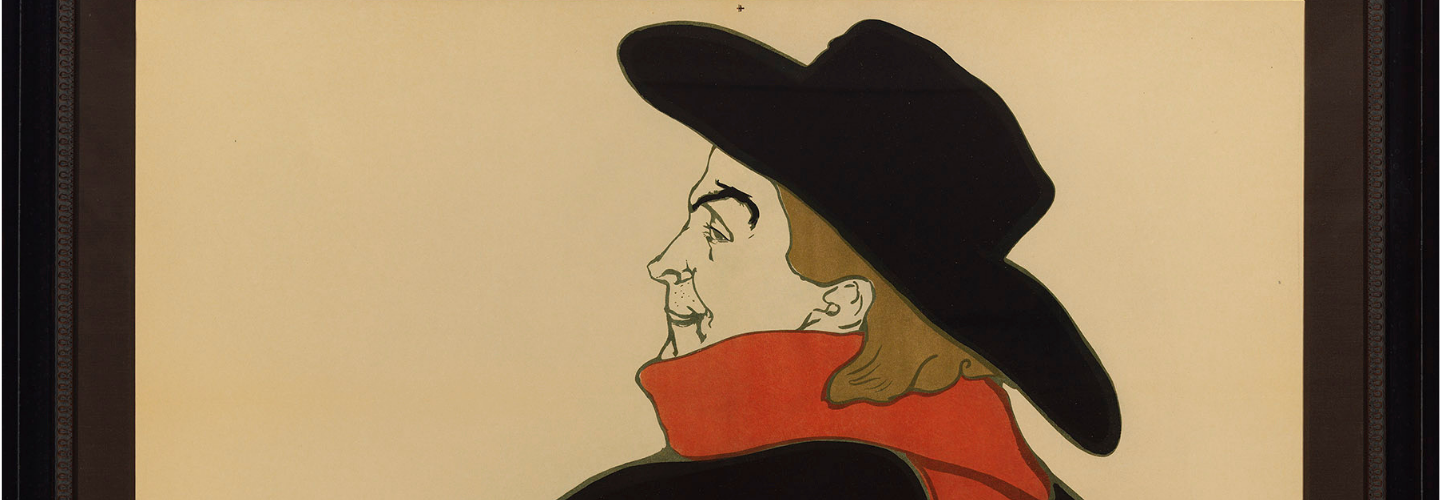In the final decades of the 19th century large brightly colored posters that advertised commercial entertainments began appearing on Paris city streets. Their startling appearance and escalating ubiquity highlighted the growing circulation of graphic works in the French capital at the fin de siècle. Prints became inescapable as more artists turned to lithography, which also attracted growing numbers of art collectors.
This moment of affichomanie, or postermania, transformed the urban environment, adding advertising and intense color to a world whose visual culture had long been dominated by monochromatic public notices and conventional forms of art. Both large-scale original posters and smaller reproductions appealed to art buyers, alongside the parallel vogue for smaller prints in various media in portfolios.
Postermania set the stage for the celebrity of a singular French artist, Henri de Toulouse-Lautrec (1864–1901). Henri de Toulouse-Lautrec was a quirky and artistically talented aristocrat who prospered in the city’s entertainment cultures situated at the edges of respectable society. Already emerging as a specialist in the representation of the marginal pleasures of Paris starting in 1886 in his paintings and drawings, he struck gold in 1891 with his first lithographic poster. It was a five foot high multi-color advertisement for Le Moulin Rouge, a nightclub in the city’s brash entertainment district of Montmartre. Le Moulin Rouge was the first Parisian club built to explicitly feature tawdry performances with a bourgeois audience in mind. By 1891, the culture of celebrity was a well-established phenomenon embracing many of the entertainers portrayed by Lautrec.
Toulouse-Lautrec Prints: Art at the Edges of Modernity is a focused exhibition exploring the scope of Lautrec’s work in print media in the final decade of his life. From public works such as posters, illustrated books, and theater programs, to privately circulated portfolios, this selection of works reveals a wide range of lithographs by one of the best known artists of the modern era.
